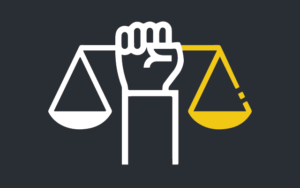The end of the Civil War gave way to the 13th, 14th and 15th Amendments and kicked off a new direction for Supreme Court decisions.
But the shift did not come as a clean sweep. While the Constitution is the nation’s ultimate ruling force, the Supreme Court spreads its meaning.
The Equal Protection clause
The 14th Amendment has had the greatest change in meaning over time. It guarantees “equal protection of the laws” for all. Yet “equal” in 1896 (Plessy v. Ferguson) had a different meaning than “equal” in 1954 (Brown v. Board of Education).
Direct vs. indirect discrimination
Throughout the 1950s and 1960s, the Court used the 14th Amendment to invalidate direct (obvious) racial discrimination from state governments. After that came more subtle forms of discrimination: indirect discrimination.
The last case on the infographic, Village of Arlington Heights, shows an example of indirect discrimination. In the case, a local government outside of Chicago, refused to allow a multi-family housing development. The developers sued, arguing the reason was to keep black residents (who tended to use multi-family housing) out of the area. But the developers could not prove the government had such an intent. The Supreme Court said the 14th Amendment could not help, without proving government intent. Fortunately for the developers, the Fair Housing Act of 1968 was able to fill in.
Civil rights legislation (federal laws)
Just because the Constitution does not stop something, it doesn’t mean it’s legal. The Fair Housing Act is among several laws that exist today which prevent indirect discrimination. Sometimes it’s hard to prove a racist or discriminatory intent. Sometimes the actors do not know they are discriminating. Nevertheless, certain laws prohibit actions that have discriminatory effects, even if intent cannot be proven.
A note on state action
Keep in mind that the 14th Amendment only controls state or local government actions – not the actions of private parties. Various pieces of legislation, both at the federal and state level, may control the actions of private parties.
What are “Protected Classes”?
Other “protected classes“
While this report focuses on racial discrimination, the Constitution, federal and state laws also may protect against discrimination based on other characteristics, like national origin, religion, sex, age, and sexual orientation. View our infographic explaining the legal term “protected classes.
More information
-
List of important civil rights Supreme Court cases (The Leadership Conference).
-
Current Supreme Court case reviewing Colorado’s use of a state anti-discrimination law: Masterpiece Cakeshop v. Colorado.
-
Article discussing how San Antonio v. Rodriguez continues to perpetuate inequality (Daily Beast).
-
Article discussing indirect discrimination in the housing context (American University Law Review).



